I have been attempting to explain exactly why Eric pond filters are the best that money can buy since 2009.
It’s now 2015 and I reckon it’s time for an updated explanation.
Attempting to explain simplicity is far more difficult than many out there may think.
These texts were originally intended to be directed to all my friends in the Philippines who use my filters or are considering using them in the future, however this is open to all who may be interested via my website and FaceBook.
To clear some matters up in advance –
Eric filters are not multi-chamber units – they are single chamber units containing both a mechanical stage and a biological stage.
Eric filters are only produced with a single flow pattern and that is ‘horizontal water flow’ – similar to the natural flow of a river or a canal.
Eric filters are true ‘stand-alone’ filters that require no other filtration add-ons – either before or after the filter.
Eric filters are all hand-made to order; you will not find these in stock at any Koi dealer’s outlet – apart from Koi Hob in Manila who are dedicated Eric believers.
Eric filters can be fabricated in black polypropylene boxes as standard or in clear PVCu boxes – for those who wish to witness what is taking place inside them.
Eric filters can all be made as gravity-fed units or as pump-fed units. At the moment I’m using a gravity-fed Eric filter for my large pond and a pump-fed Eric filter for my indoor pond.
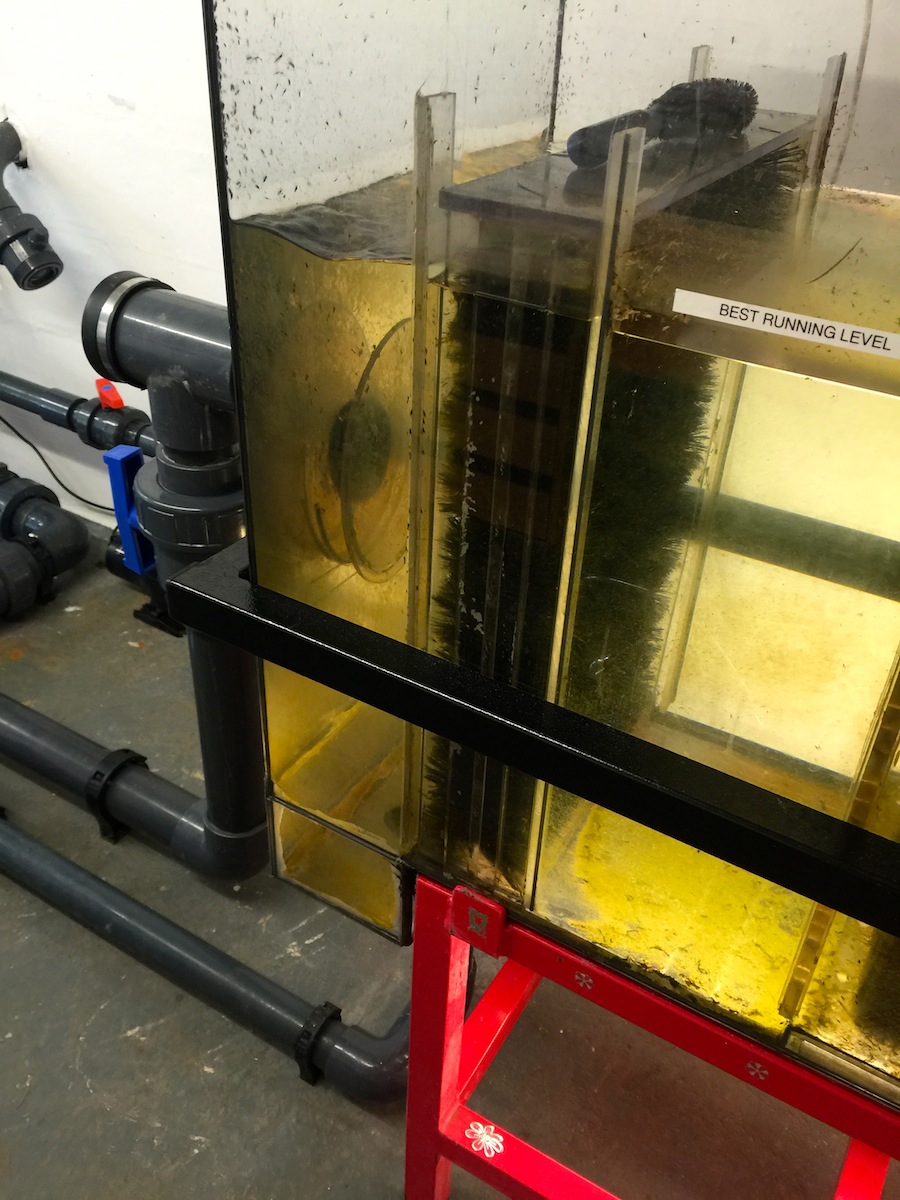
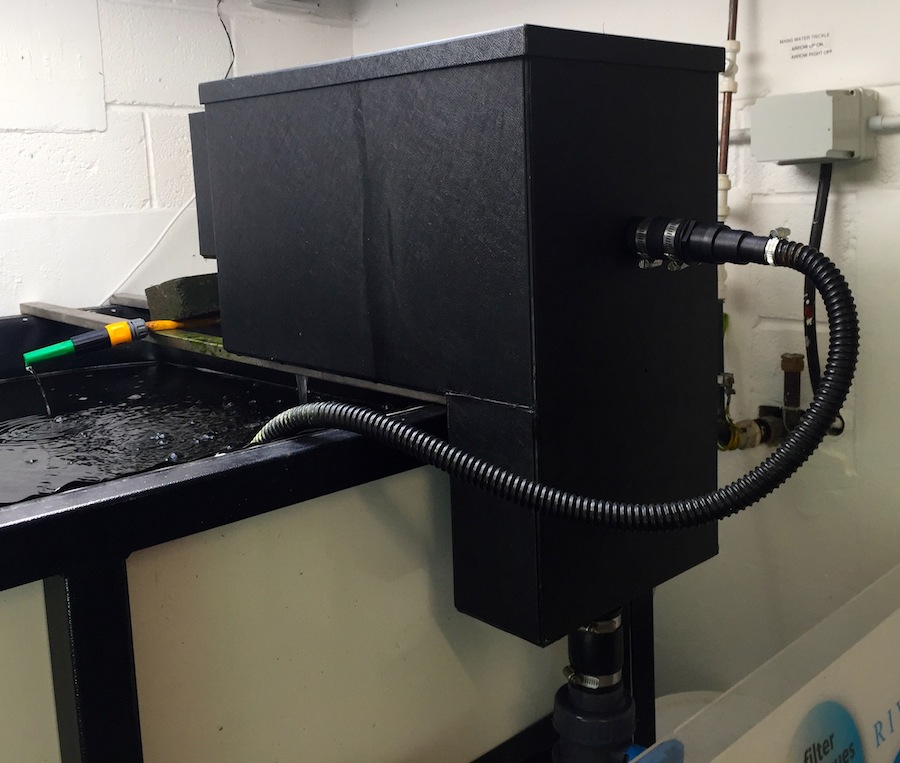
I have often mentioned that regular water changes in a fishpond are of vital importance and that the very best way of doing this is by discharging the entire filter to waste. Viewing the filter system as the pond lavatory (which it is) makes good sense that the wastewater is taken from here.
I have not mentioned that the discharge should be carried out on a daily basis because this all depends on the system in question – and bearing in mind that no two systems are ever exactly alike – this now becomes a delicate subject to explain – except for stating it is extremely rare to ‘over-clean’ a filter?
Eric filters managed correctly, will prevent all new instances of hikui and shimi from infecting your Koi – but this can be said of any other filter – managed correctly that is.
Eric filters surprisingly hold only very little water when compared to other systems and because they are all narrow and shallow, they can be completely discharged to waste without any significant drop in pond level. This results in the system being able to be started up again immediately after a discharge.
Moving on, the mechanical stage in Eric filters is the brush box and the biological stage consists of eMat blocks.
The brush box is fixed into place by ‘side tracks’ to ensure no movement either forwards or backwards can take place. This also applies to the ‘side tracks’ that ensure the eMat cartridge blocks are fixed.
However, the brush box and the cartridge blocks can be removed in seconds for inspection to reveal the box below.
The Mechanical Stage.
All mechanical stages are merely barriers placed before the biological stage in order to trap and collect visible but unwanted matter that can make the pond water look dirty if not dealt with.
These mechanical barriers all work to ‘degrees’ of efficiency but be assured, if these barriers do not allow even water to pass through – this will result in total blockage and burned-out water pumps.
As an example – if one were to use a flat mesh screen (let’s say 100 microns) – the screen would require removing and cleaning at least every hour – do bear this in mind.
My tethered brushes are far more efficient than loose brushes – not only in ‘trapping’ the waste but also in ‘releasing’ the waste whenever required.
Although the brush box on my own system handles four pond bottom drain lines at all times – I clean my brush box on a weekly basis and this takes very little time.
Bearing in mind that this single brush box is the only mechanical stage on my 17,500-gallon system and I can easily see the bottom drains at 2.35m below – I reckon my single brush box is doing a remarkable job in maintaining the clarity.
Finally, and as mentioned, I have never removed the brush box from the filter; all cleaning takes place inside the filter.
Please take a close look at this video because this is a perfect example of how my brush box should be cleaned.
An explanation here – when both inlet and outlet are stopped to the filter, naturally the filter is no longer in use. Once the drain valve is opened then all the water in the box starts to move forwards to the drain valve.
In short it is impossible for any of the debris trapped in the brush box to move backwards and go into the biological stage – although many have mentioned this ‘could’ be taking place.
Trust me, I can witness what takes place in my clear filters on a daily basis, I live with them – I love them and I do take note of exactly what takes place inside them.
I’ve often wondered how many other filter manufacturers out there take the time to do all this with their own filters – on their own ponds and – with their own Koi?
The Japanese Koi breeders I’ve met over the years, all adopt similar, simple methods of clearing the pond drain lines and the filter drain lines also on a daily basis – because this also gives them a simple way of making those vital water changes.
Whether we use standpipes for this or valves (as I do) – both produce the same result in throwing all the unwanted waste away.
The next two shots show discharge boxes used by Japanese Koi breeders
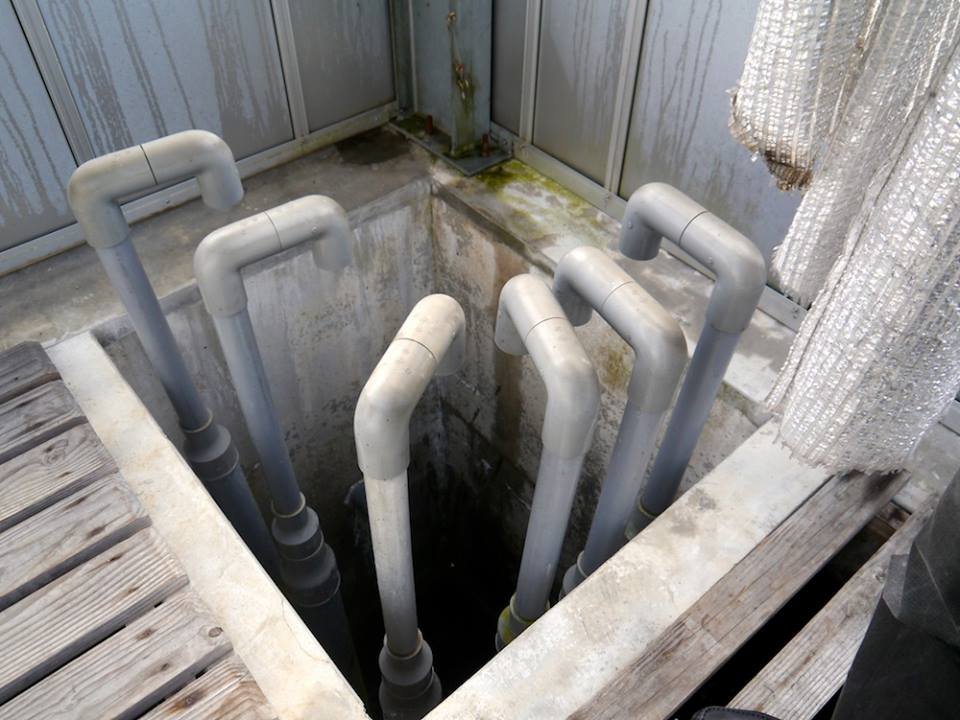
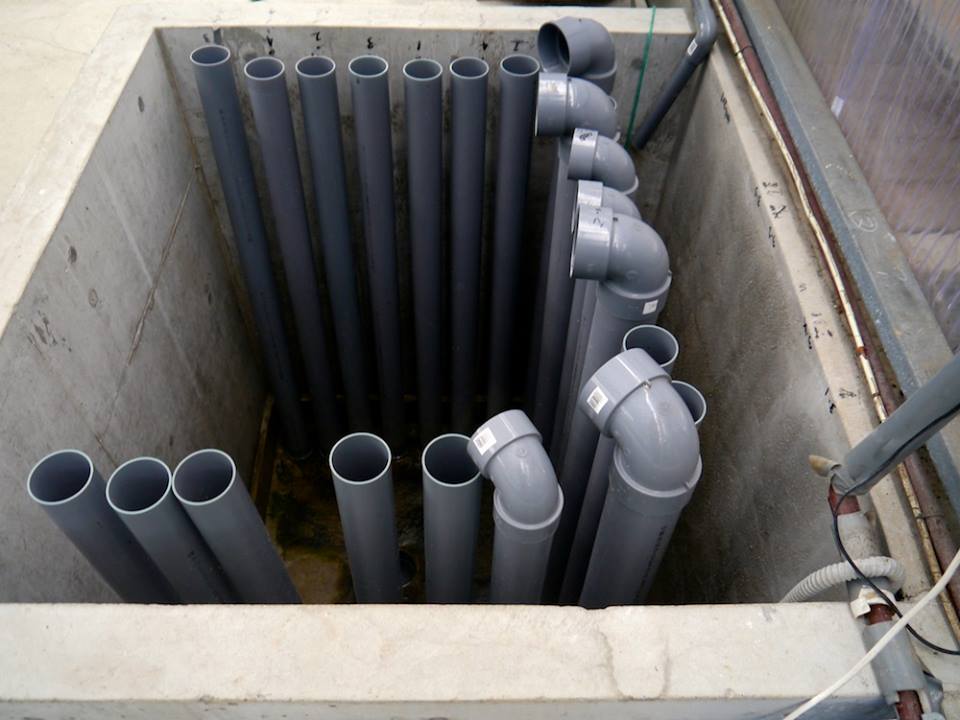
The Japanese Koi breeders generally keep their stocks in indoor, heated re-circulating systems for around 265 days per year and on the other 100 days, their tategoi are kept in the field ponds for summer.
Of course, these indoor systems only have to handle Koi waste and the pheromones that the Koi give off as growth inhibitors – no leaves, no twigs and no dust.
But the lines are still cleared on a daily basis – as are mine that can be seen on the video below.
That’s it – the drain lines are cleared, the pheromones on the pond base are cleared and the system can be re-started together with a trickle of tap-water to top the water level back up to normal running level – which also takes care of the vital water change.
A word again, regarding pheromones – these cannot be removed either mechanically or biologically – the only single way to remove them from the water is to dump them to waste. If you wish your Koi to grow to large sizes then this should further explain why regular water changes are so very important.
The Biological stage.
Even if one could guarantee that no debris can pass into the biological stage of the Eric filter, this is no guarantee that the biological stage can be left un-cleaned.
The biological stage of Eric filters manufactures its own waste matter in the form of a yellow-brown grit that’s produced in quantity and sinks to the base of the box.
This is what the ‘grit’ looks like after being processed and dried at a local laboratory some years ago.
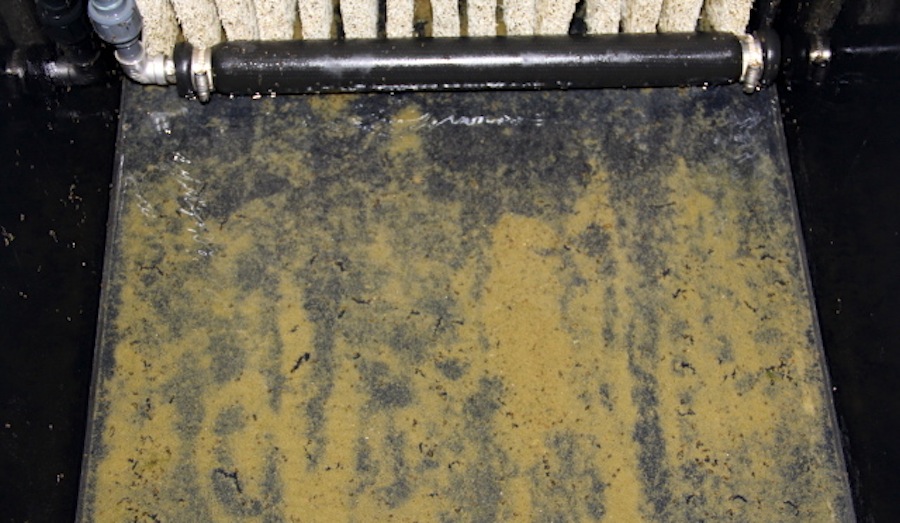
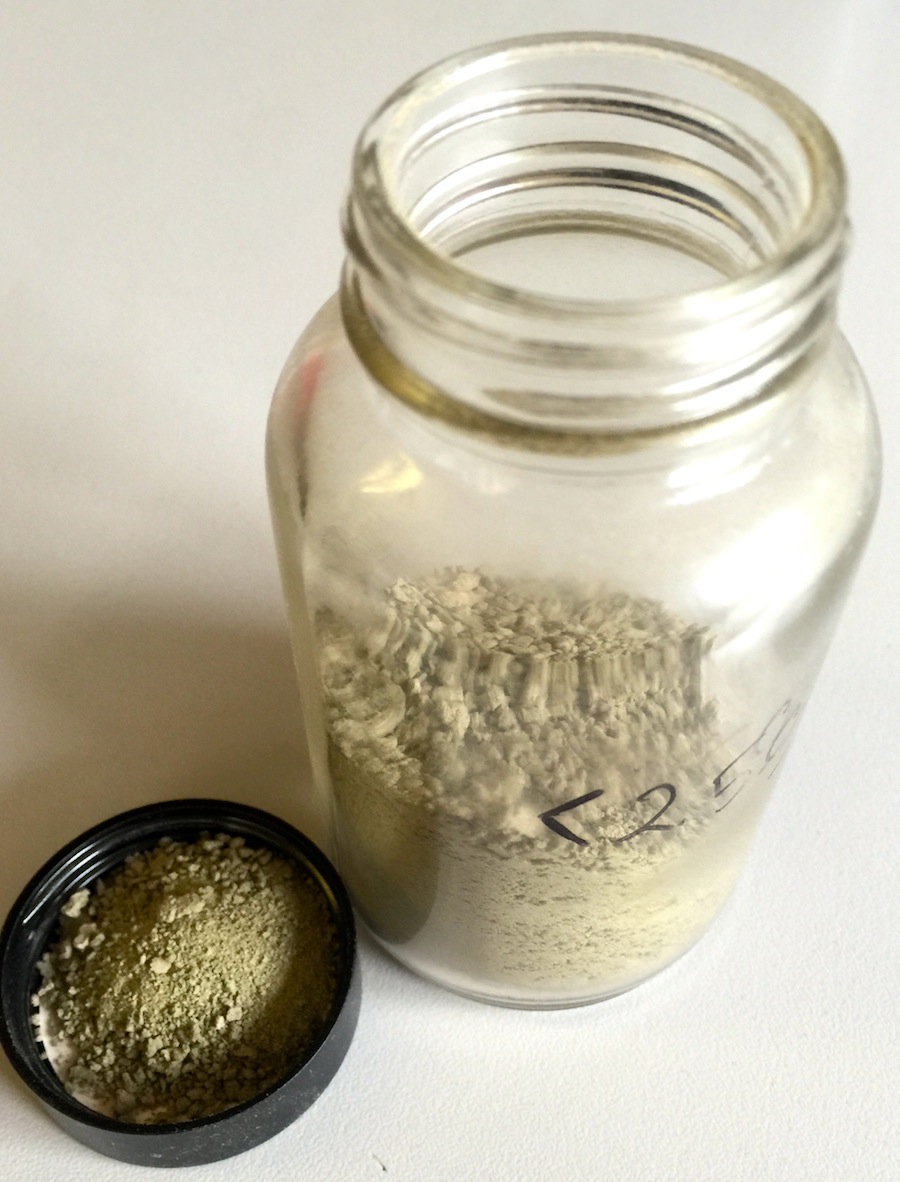
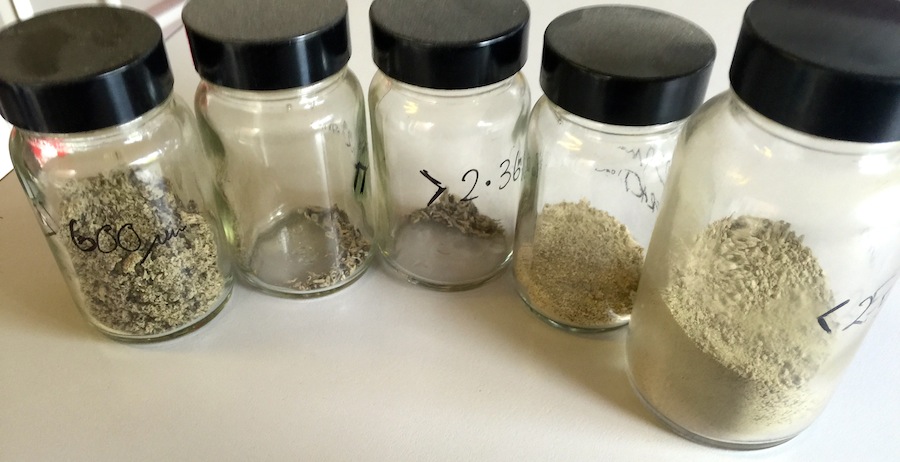
It must be pointed out that whilst this grit is inert and totally fish-safe, it does need removing periodically. Modern day Eric users will not see this, because the perforated transfer baffle that separates mechanical and biological stages has a letterbox slot at the base. This is to allow any waste in the biological stage to pass freely to waste.
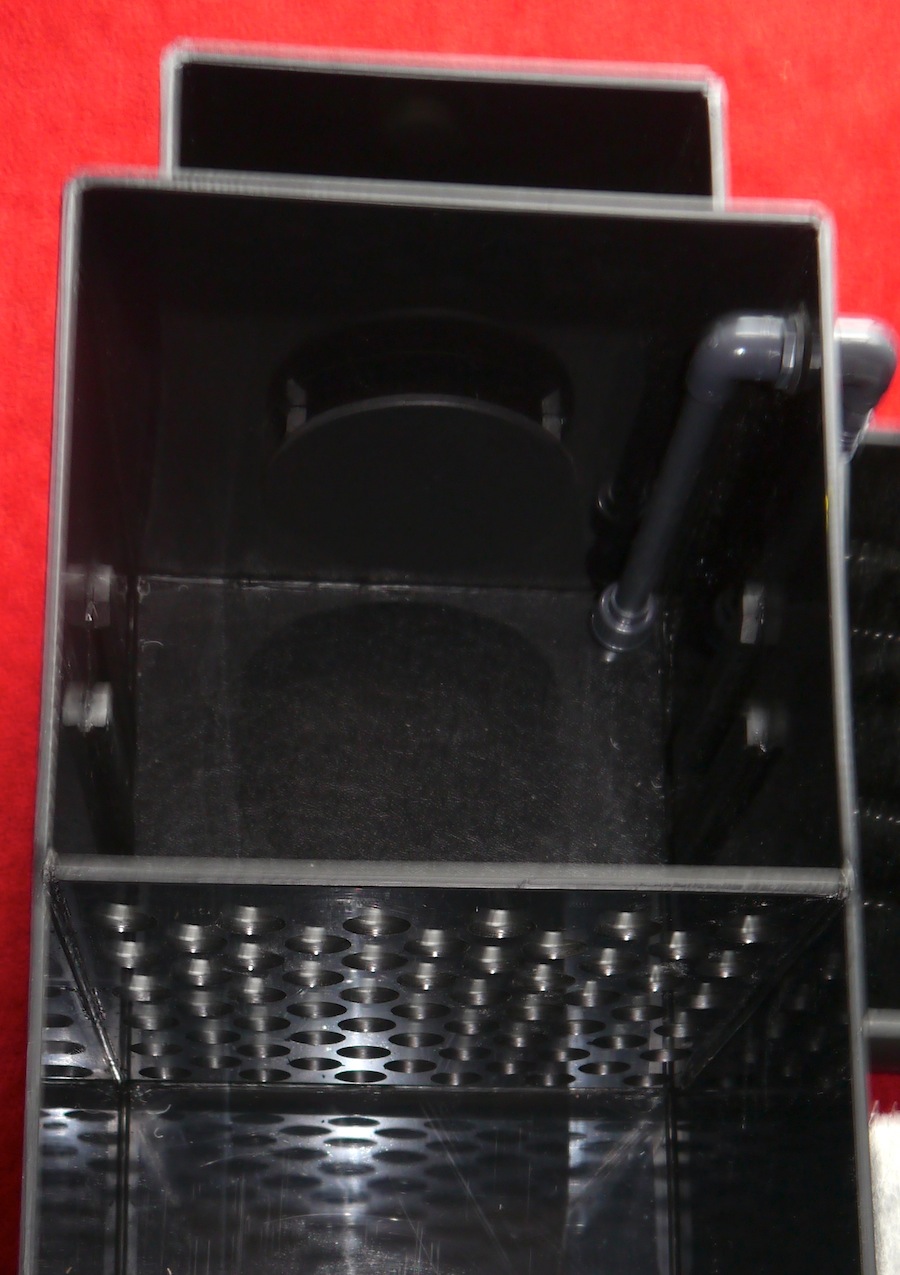
This dispenses with the theory that biological stages do not need to be cleaned, most certainly the biological stages in my Eric filters do!
And if there are any escapees from the mechanical stage – these too, will be also removed to waste during discharge!
I’m convinced that the majority of success for my filter systems comprises of the horizontal water flow pattern and the eMat cartridge blocks themselves – aided greatly by periodic vertical aeration to confuse the gentle flow all along the way.
No doubt, it’s a laborious process in assembling the blocks using stainless steel threaded rods, many nylon spacers and end bars to give them added strength but, believe me, it’s all worth the
